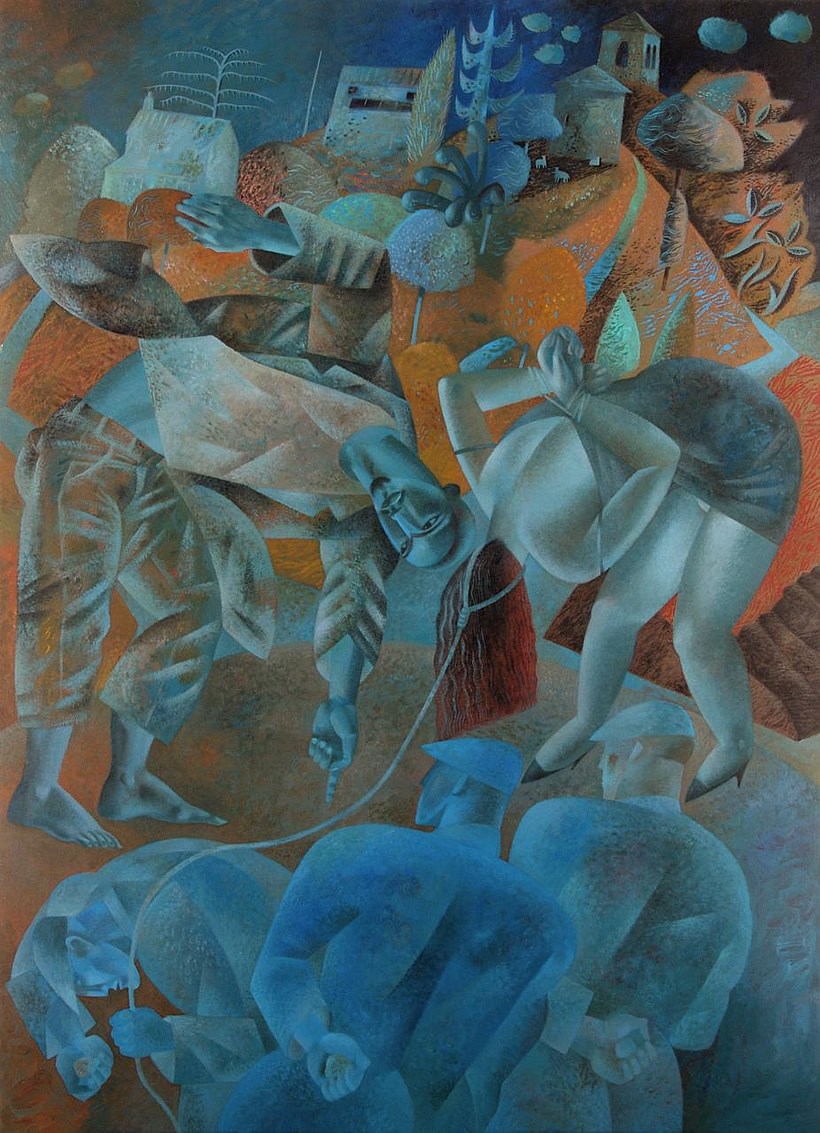Clive Hicks-Jenkins
Have you ever thought about what the adulterous woman might have looked like or worn? Here she is, tottering in little high heeled shoes, a strappy dress half falling off her shoulders and the skirt riding up to show her underwear. Not some poor wronged soul, but someone who made themselves sexually alluring, who sought out that extramarital liaison, who cheated on their husband. Not the obvious person on whose side to be on, to defend, to offer forgiveness to.
The men who have led her through the streets know this. That is why they feel so justified in their plan; the stones for her punishment lie ready in their hands. Here is just the kind of woman they don’t like, don’t approve of and who deserves what she has coming. So it’s time for justice. And if they can use her case to trick Jesus at the same time? Well, all the better! Will Jesus dare go against the Old Testament laws and defend this woman? If he does, then they’ve got him!
When they turn up and challenge him, Jesus takes his time. He writes in the sand, and as he does so, he makes us stop, too. Jesus’s head is turned upside down here, his body a mirror image of the women. He is looking at things from another perspective. From her perspective? What does he see?
The men want traditional justice: tit for tat; for every crime, a punishment. But as we turn our heads to get a better view of Jesus, we don’t find the traditional Jesus, and we find that Jesus’ perspective on justice is not the traditional one, either: what he wants is a world in which neither women cheat on their husbands, nor men stone a woman to death. Two wrongs don’t make a right. And so the possibility of forgiveness is thrown into the mix.
We are standing alongside the men with their stones. “Let anyone among you who is without sin be the first to throw a stone at her”, Jesus says. What will we do? What happens when we look at our sins, our wrongs? We realise that although we may be more modestly dressed than the adulteress, although our sins may be different, they are still there. And we find ourselves not opposite, but on the same side as her: human, flawed, hoping for forgiveness and the possibility of a second chance, or a way of making good. And it is just that opportunity that Jesus is offering us.
The artist based the backdrop on a Catalonian village he had visited: picturesque on the surface, but its dark Spanish Civil War history buried and ignored beneath. And so the painting goes on to ask what we would do, not just about us and this woman, but about everyone, in all sorts of situations. How do we want to do justice? Amid the moral conundrums of adultery? Amid the unlawful behaviour of criminals? Amid the terror inflicted by whole sections of society on one another? Do we want crime and punishment or truth and reconciliation? Can we allow for forgiveness? Can we free people from lives driving them to hurt others? Do we want hurt in return for hurt, or is there a way to bring healing and wholeness to everyone?
Biblical References
The woman caught in adultery (John 7:53-8:11)
The Artist
Clive Hicks-Jenkins is a well-known Welsh artist. You can find out more about him and his art on his website or by following him on Facebook, Instagram or YouTube.

Leave a Reply